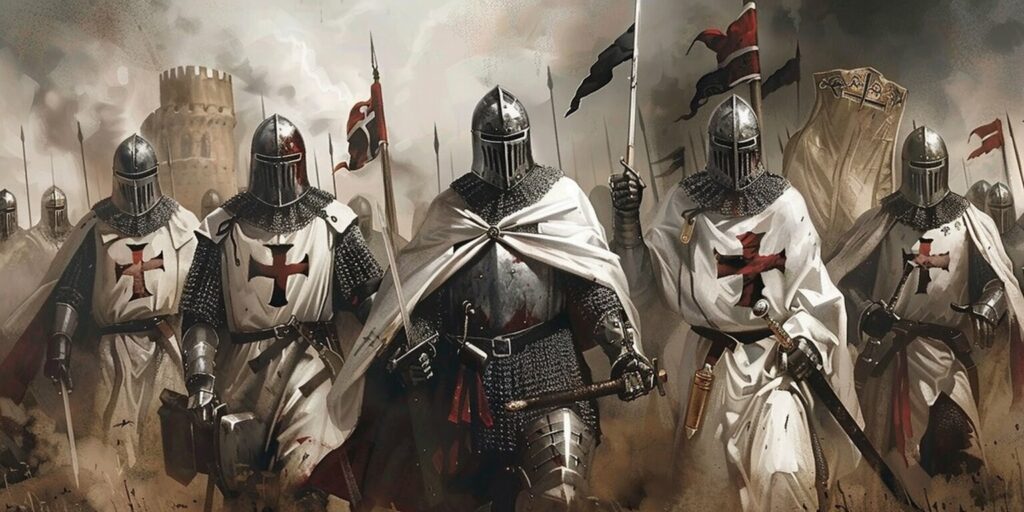In the realm of Freemasonry, the Knights Templar and Scottish Rite hold significant intrigue. However, there is ongoing debate regarding whether the Knights Templar is integrated within the Scottish Rite. This article explores the connections between these two entities, the Grand Lodge and the Templar Order, and reveals the truth behind their association.
Before delving into the connection between the Knights Templar and the Scottish Rite, it is essential to have a fundamental understanding of Freemasonry. Freemasonry is a fraternal organization with roots tracing back to the Middle Ages, centered around self-improvement, brotherhood, and the pursuit of truth. The Knights Templar, on the other hand, were medieval knights formed during the Crusades. They played a pivotal role in defending Christianity and evolved into an emblem of chivalry and mystery. The Scottish Rite, a branch of Freemasonry, focuses on enhancing Masonic teachings and rituals through a series of degrees, each showcasing its own symbolism and teachings.
While the Knights Templar and Scottish Rite exist as separate entities, they do have connections. A branch of Freemasonry known as the Masonic Knights Templar concentrates specifically on the ideals and symbolism of the historical Knights Templar. This branch is part of the York Rite system, another facet of Freemasonry, which includes the Royal Arch.
Within the Scottish Rite is a degree referred to as the “Knights of the Temple” or the “Templar Degree.” This degree incorporates Templar symbolism and history elements into the Scottish Rite rituals.
Understanding the Basics
Let’s examine the basics of each to fully understand the relationship between Freemasonry, the Knights Templar, the Scottish Rite, and the Grand Lodge.
Freemasonry Overview
Freemasonry is a fraternal organization with roots in the Middle Ages. With foundations in self-improvement, brotherhood, and the pursuit of truth, Freemasonry has attracted individuals seeking enlightenment and personal growth.
Knights Templar
The Knights Templar, formed during the Crusades, was a renowned medieval knight order. They played a significant role in defending Christianity and are often associated with chivalry and mystique.
Scottish Rite
The Scottish Rite is a branch of Freemasonry that focuses on enhancing Masonic teachings and rituals. Comprising a series of degrees, each degree of the Scottish Rite offers unique symbolism and lessons to its members.
The Knights Templar and Scottish Rite Connection
While the Knights Templar and Scottish Rite are distinct entities, there are connections between the two. The Masonic Knights Templar, a branch of Freemasonry focusing on the ideals and symbolism of the Knights Templar, often embraces the principles of the Templar Order and the Red Cross. It is a part of the York Rite system, another branch of Freemasonry, including the Knight of Malta.
Within the Scottish Rite, there is a degree known as the “Knights of the Temple” or the “Templar Degree.” This degree incorporates Templar symbolism and history elements into the Scottish Rite rituals, further connecting the Knights Templar and Scottish Rite.
The Masonic Order and the Templar Grand Organization
The Masonic Order, including the Grand Lodge, has a long-standing relationship with the Knights Templar, albeit in a symbolic and philosophical sense. Freemasons often draw inspiration from the Knights Templar’s ideals and values, incorporating their symbolism, rituals, and the Order of the Temple into Masonic ceremonies.
While the Masonic Order does not claim direct lineage or descent from the historical Knights Templar, it acknowledges the profound influence that the Templars have had on the organization’s principles and teachings.
Templar Grand Organization refers to the various Masonic bodies, including the Knights of Malta, that specifically focus on the Knights Templar. These organizations, including the Grand Lodge, are dedicated to preserving and promoting the traditions and values associated with the Templars within the context of Freemasonry.
Debunking Myths and Clarifying Misconceptions
Many myths and misconceptions surround the Knights Templar and their connection to Freemasonry. One common misconception is that Freemasons, particularly those within the Grand Lodge, are direct descendants of the Templars, which is not historically accurate.
King Philip IV of France’s suppression of the historical Knights Templar in the 14th century further added to the confusion. While there are Templar-inspired degrees within Freemasonry, it is important to differentiate between historical facts and symbolic interpretations.
Final Thoughts
In conclusion, the relationship between the Knights Templar and the Scottish Rite is not one of direct organizational affiliation but rather a connection rooted in symbolism and inspiration. The Templar degree within the Scottish Rite and the Masonic Knights Templar serve as reminders of the influence and legacy of the historical Knights Templar within the broader Masonic tradition. These degrees offer Masons the opportunity to delve deeper into the medieval Templar ideals and incorporate their symbolism into their own Masonic journey.
It is crucial for individuals to differentiate between historical facts and symbolic interpretations within Freemasonry, particularly when examining the Order of the Temple and the Royal Arch. While the historical Knights Templar played a significant role in medieval history, their direct association with Freemasonry is a matter of interpretation within the fraternity. The Templar-inspired degrees in the Scottish Rite and the Masonic Knights Templar Commanderies allow Masons to explore and honor the virtues and values that the historical Knights Templar embodied, emphasizing the importance of ideals such as chivalry, honor, and loyalty.
By studying the medieval Templar heritage and participating in these Templar-inspired degrees, Masons gain a more comprehensive understanding of the historical Knights Templar’s place in the Masonic tradition. Through these symbolic connections, Freemasonry keeps the Templar legacy alive, celebrating the impact the Knights Templar had on the development of the fraternity and its values of brotherhood, morality, and personal growth within the Masonic tradition.

